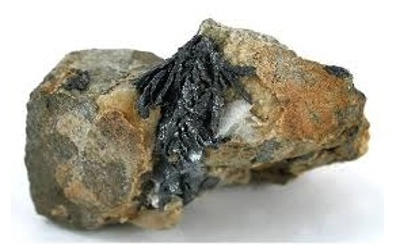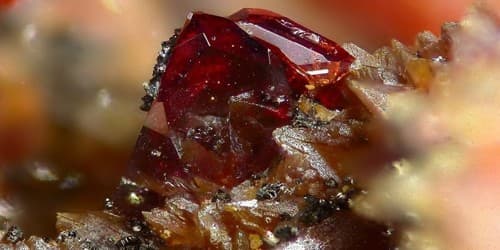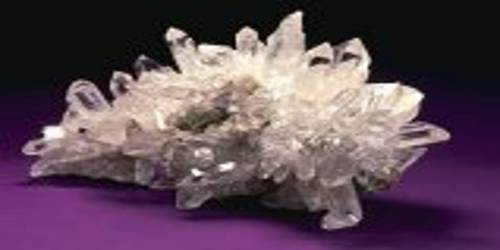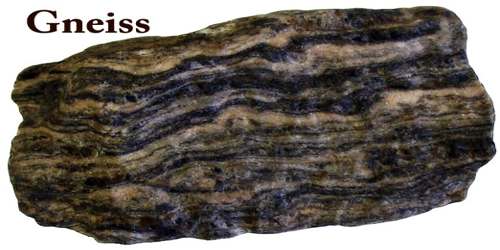Miargyrite is a mineral, a sulfide of silver and antimony with the formula AgSbS2. It is an uncommon silver sulfosalt. It is a dimorph of cuboargyrite. Originally discovered in the Freiberg district of Germany in 1824, it has subsequently been found in many places where silver is mined. It is a monoclinic sulphide of silver and antimony, a minor ore of silver which usually occurs as thick, tabular, steel-grey to black crystals, and contains less silver than the related minerals proustite and pyrargyrite.
Miargyrite is named from the Greek meyon, “smaller” and Argyros, “silver,” as its silver content is lower than most silver sulfides. Since it contains a lesser percentage of silver than other silver ores such as Pyrargyrite.
General Information
- Category: Mineral
- Formula: (repeating unit) AgSbS2
- Crystal system: Monoclinic
- Crystal class: Prismatic (2/m) (same H-M symbol)
- Color: Steel gray, Lead gray, Blackish red, Reddish gray.

Fig: Miargyrite from San Genaro Mine
Properties
Though opaque and with a metallic luster, it may have slight translucent overtones of dark red, especially when containing arsenic in its structure which can replace some of the antimony. It usually occurs in low-temperature hydrothermal deposits. and forms black metallic crystals which may show a dark red internal reflection. The streak is also red.
- Mohs scale hardness: 2-2 1⁄2
- Streak: red
- Specific gravity: 5.2
- Cleavage: {010} Imperfect
- Density: 5.1 – 5.3, Average = 5.19
- Diaphaneity: Translucent to Subopaque
- Hardness: 2-2.5 – Gypsum-Finger Nail
- Luminescence: Non-fluorescent.
- Luster: Sub Metallic.
Occurrences – In hydrothermal veins of low-temperature origin.
It is a mineral consisting of a silver antimony sulfide and occurring in iron-black to steel-gray crystals or masses whose powder is cherry red.
Association: Baumstarkite, proustite, pyrargyrite, polybasite, silver, galena, sphalerite, pyrite, quartz, calcite, barite.
















